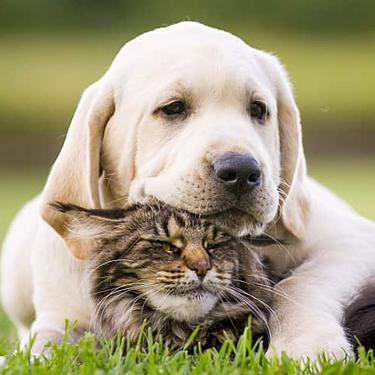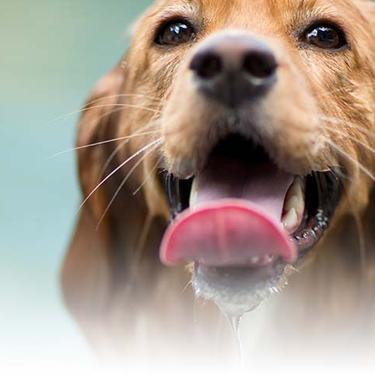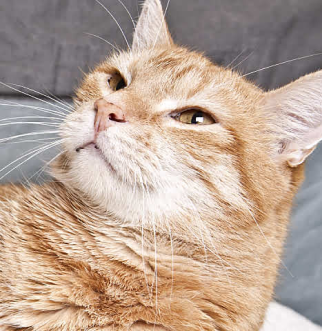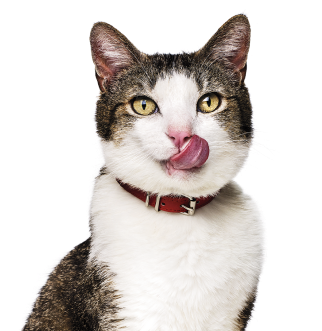
-
Find the right food for your pet
Take this quiz to see which food may be the best for your furry friend.
Find the right food for your pet
Take this quiz to see which food may be the best for your furry friend.
Featured products
 Adult Perfect Weight & Joint Support Chicken Recipe Dry Dog Food
Adult Perfect Weight & Joint Support Chicken Recipe Dry Dog FoodThis weight management and mobility support dog food was created with Hill’s unique understanding of the biology of overweight dogs.
Shop Now Adult 7+ No Corn, Wheat, Soy Chicken & Brown Rice Dog Food
Adult 7+ No Corn, Wheat, Soy Chicken & Brown Rice Dog FoodSupports energy level and beautiful coat in mature dogs
Shop Now Adult 7+ Perfect Digestion Chicken, Whole Oats & Brown Rice Recipe Dog Food
Adult 7+ Perfect Digestion Chicken, Whole Oats & Brown Rice Recipe Dog FoodScience Diet's breakthrough nutrition supports ultimate digestive well-being & healthy microbiome for dogs age 7+
Shop NowFeatured products
 Adult Savory Chicken Entrée Cat Food
Adult Savory Chicken Entrée Cat FoodPrecisely balanced nutrition with the delicious taste of savory minced chicken to help fuel the energy needs of cats during the prime of their life
Shop Now Adult Perfect Digestion Chicken, Barley & Whole Oats Recipe Cat Food
Adult Perfect Digestion Chicken, Barley & Whole Oats Recipe Cat FoodScience Diet's breakthrough nutrition supports ultimate digestive well-being & healthy microbiome
Shop Now Perfect Weight Salmon & Vegetable Canned Cat Food
Perfect Weight Salmon & Vegetable Canned Cat FoodOver 70% of cats lost weight within 10 weeks when fed this nutrition
Shop Now -
Dog
- Dog Tips & Articles
-
Health Category
- Weight
- Food & Environmental Sensitivities
- Urinary
- Digestive
- Joint
- Kidney
-
Life Stage
- Puppy Nutrition
- Adult Nutrition
- Senior Nutrition
Cat
- Cat Tips & Articles
-
Health Category
- Weight
- Skin & Food Sensitivities
- Urinary
- Digestive
- Kidney
-
Life Stage
- Kitten Nutrition
- Adult Nutrition
Featured articles
 Pet Food Storage Tips
Pet Food Storage TipsDiscover how and where to store your dry, as well as canned, dog and cat food. Learn how to find the "best before" dates on all Hill's pet food packaging.
Read More The Incredible Science Behind Your Pet's Microbiome
The Incredible Science Behind Your Pet's MicrobiomeLearn what a pet's microbiome is, how it contributes to your pet's gut & overall health, and why nutrition is important in maintaining healthy microbiomes.
Read More Water
WaterDiscover why water is the most important nutrient for your dog or cat to live a healthy life. Find out how much water your pet should consume each day.
Read More -
Find the right food for your pet
Find the right food for your pet


While that bump you noticed when you were scratching your cat's ears the other day might be harmless, it's always important to consult a veterinarian if you notice a lump on a cat. That's because infections, inflammatory lesions and cancerous tumors are always a possibility — and all of these require veterinary intervention.
Here's a primer on what that bump might be and what you should do about it.
How a Lump on a Cat Forms
Bumps on cat skin fall into four categories — traumatic, parasitic, inflammatory and cancerous:
- Traumatic lumps: These can form if your cat gets a puncture wound or other injury.
- Parasitic lumps: Parasites, like burrowed fleas and ticks, can also create bumps on cat skin.
- Inflammatory lumps: Inflammation or allergic reactions can lead to welts, ulcers and abscesses.
- Cancerous lumps: These lumps occur when a cat's cells lose their ability to regulate themselves.


Tasty Tips
Healthy pets are happy pets, and no one is a better resource than your pet’s veterinarian.

A veterinarian will often be able to confirm the diagnosis of a lump or bump on your cat based on how it responds to treatment...
Common Lumps and Bumps on Cat Skin
Within the above four categories, here are some of the most common kinds of growths you might see on your cat:
- Abscesses: If your cat has an abscess, you'll notice a fluid-filled bump also containing swollen tissue. This is caused by infection as a result of a skin puncture. Abscesses can be found anywhere on the cats body and are most commonly found on the chest and abdomen (not the arms and legs).
- Cysts: A cyst is a raised bump caused by a blocked hair follicle, skin pore or a bacterial skin infection.
- Anal gland abscesses: If your cat's anal glands get blocked, they can become infected and abscessed.
- Eosinophilic granulomas: These bright red or pink, bumpy areas of inflammation are common in cats. Some will occasionally affect the mouth in a characteristic pattern called a "rodent ulcer."
- Cancers: Cancers of the skin are not as common in cats as they are in dogs, but if the cause for a lump on your cat is unknown, it should always be removed and submitted for testing.
If a cat develops a lump as a result of a certain tumor, the lump may appear anywhere on a cat's body. For example, if your cat has a mast cell tumor, you may notice lumps on your cat's neck or head. But if your cat has breast cancer, lumps may appear on their underside.
How Veterinarians Diagnose a Lump on a Cat
In many cases, your cat's veterinarian will be able to diagnose your kitty's lumps and bumps by doing a complete physical examination. In some cases, though, they might need to collect a tissue sample to determine the reason for the growth. Some tests your veterinarian might offer include:
- A skin scrape or impression smear: These tests involve taking a sample from the surface of your cat's lump and using a microscope to help identify its origin.
- A fine needle aspirate: This test requires inserting a needle into the skin lump to extract cells for evaluation.
- A biopsy: A biopsy is a small surgery to obtain tissue samples. A board-certified pathologist should always review these samples.
Treatment for a Lump on a Cat
A veterinarian will often be able to confirm the diagnosis of a lump or bump on your cat based on how it responds to treatment, and treatment depends entirely on the cause: If the lump was caused by trauma, then your veterinarian will provide direct wound care and will likely prescribe antibiotics. Lumps caused by parasites should be treated with topical or systemic parasiticides. If an inflammatory or allergic condition caused the bump, topical or systemic anti-inflammatory medicine should do the trick. And if your cat has a cancerous lump, treatment will depend on its evaluation by a pathologist; your veterinarian may recommend surgery, chemotherapy, radiation or simply leaving it alone.
Nutrition can also play a role in treatment. If a food allergy is the cause of a lump, and in the case of certain skin cancers, making a change to your cat's meal plan could help — just be sure to discuss with your cat's veterinarian first.
It can be unsettling to feel a lump or bump while stroking your kitty. But the best thing you can do for your cat's health is to stay calm and consult your veterinarian.


Dr. Patty Khuly is an award-winning veterinarian known for her independent thinking, her spirited pet advocacy, her passion for the veterinary profession, and her famously irreverent pet health writing.
Dr. K is an honors graduate of both Wellesley College and the University of Pennsylvania School of Veterinary Medicine. She received her MBA at The Wharton School of Business as part of the prestigious VMD/MBA dual-degree program. She now owns Sunset Animal Clinic, a veterinary practice in Miami, Florida.
Related Articles


See what Vets have to say
Read reviews from the experts and see why Hill's is the #1 Veterinarian Recommended brand.
See what Vets have to say
Read reviews from the experts and see why Hill's is the #1 Veterinarian Recommended brand.


